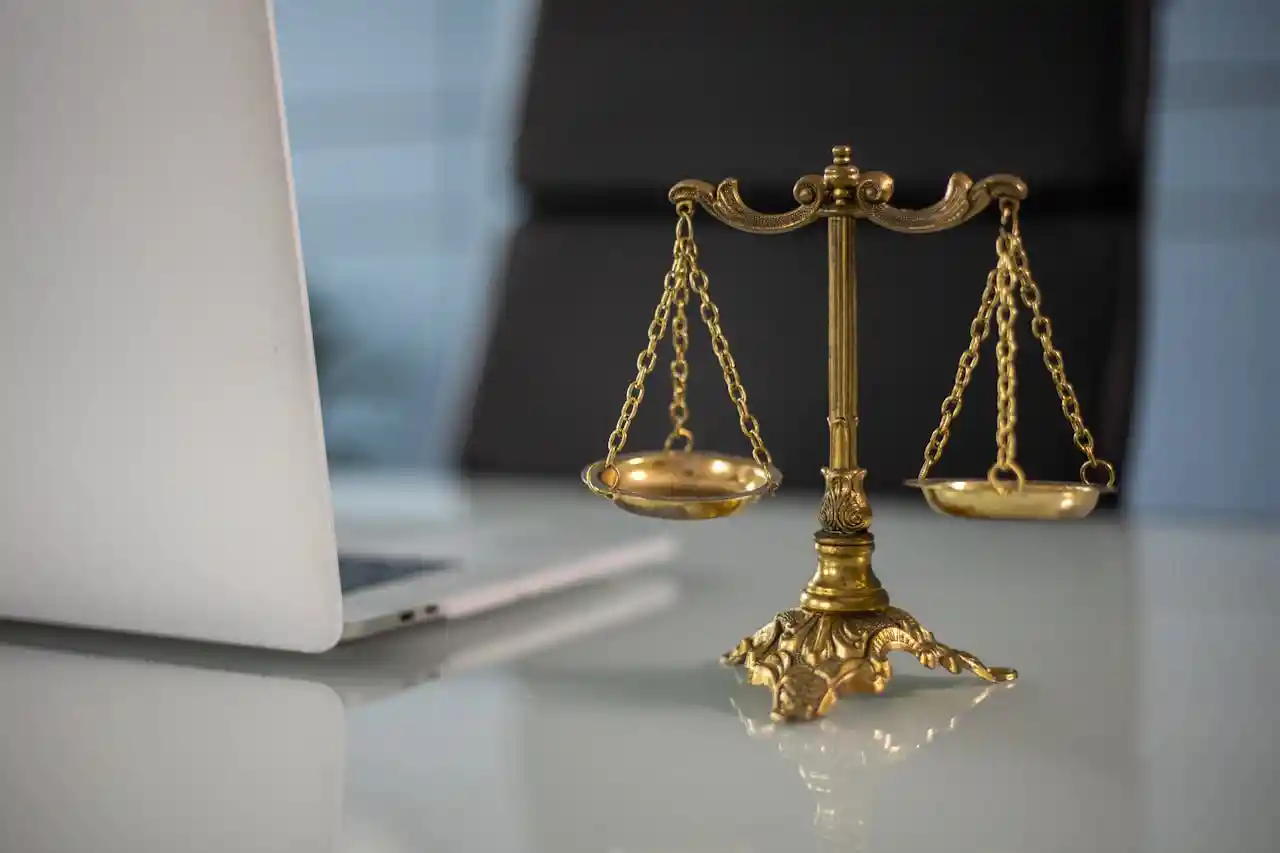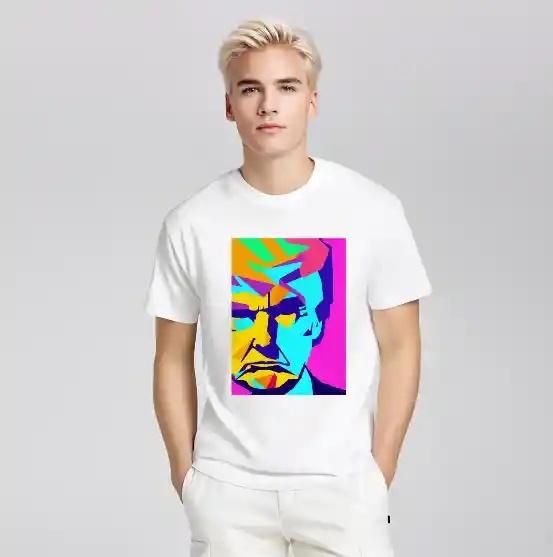
Designing and selling T-shirts is a popular and creative way to build a clothing brand. But one key challenge is how to avoid copyright infringement with t shirts. Using the wrong image, slogan, or character could lead to serious legal trouble.
Copyright infringement is a common mistake many new apparel businesses make—often without realizing it. In this blog, we'll explain what copyright means, why it matters for your T-shirt designs, and the main pitfalls to watch out for.
Whether you're creating your first design or growing your brand, understanding these basics will help you stay original, legal, and worry-free.
What Is Copyright Infringement?
Copyright infringement happens when you use someone else's creative work without their permission. This could be a design, a photo, a logo, or even words. If you sell T-shirts with someone else's protected design, you might get into serious trouble.
Think of copyright like a "no copying" rule for artists and creators. It helps protect their hard work from being stolen or used unfairly.
Here are some common examples of copyright infringement on T-shirts:
- Using a popular cartoon character without permission
- Printing a famous logo or brand name
- Copying a unique drawing or artwork you found online
Even small changes don't always protect you. If your design looks too much like the original, it can still count as infringement.
As a T-shirt creator, you need to respect these rules to keep your business safe and legal. Knowing what copyright infringement is helps you avoid costly mistakes and build your own original style.
What Are the Consequences of Copyright Infringement?
If you accidentally—or purposely—use copyrighted designs on your T-shirts, the consequences can be serious. It's not just about getting a warning; you could face legal trouble that costs time and money.
One common consequence is receiving a cease and desist letter. This means the copyright owner asks you to stop selling the infringing products immediately. If you ignore it, things can escalate quickly.
Here are some possible penalties you might face:
- Paying heavy fines or damages
- Losing profits from products you have to remove
- Facing lawsuits that drain your time and money
Besides money, copyright issues can damage your brand's reputation. Customers might lose trust if they find out your designs aren't original. This can make it harder to grow your business in the future.

How to Avoid Copyright Infringement With T Shirts
1. Use Only Original Artwork
Creating your own designs is the best way to avoid copyright problems. When you draw or design your own images, you don't have to worry about someone else owning the rights. This gives you complete control over your product.
You don't need to be a professional artist to create original work. You can use simple design tools like Canva or Adobe Illustrator to combine shapes, colors, and text in new ways. Even mixing your own photos with graphics can make something unique.
Remember: if you use a design or logo someone else made without permission, you risk getting a copyright strike. So always start from scratch or modify your ideas until they're your own. This helps you avoid any risk of copyright violation.
2. Be Careful With Online Images
The internet is full of pictures, but most of them are not free to use for business. Just grabbing a photo from Google and printing it on your T-shirt can lead to legal trouble.
Instead, look for:
- Websites like Unsplash, Pexels, or Pixabay that offer free images with permission for commercial use. Always double-check their license terms.
- Paid stock photo sites like Shutterstock or Adobe Stock where you buy a license to use images safely.
- Hiring a freelance artist or photographer to create custom images just for you.
Before you use any image, always read the license carefully. Some allow personal use only, not commercial.
You can also visit the Copyright Office website to search copyright records. This helps you confirm whether a design or image is officially registered and protected.
3. Don't Use Logos or Brands You Don't Own
Logos and brand names are usually protected by trademark laws, which are different from copyright but just as strict. Using a famous brand's logo—even if you change it a little—can lead to legal action.
Think about it like this: companies spend years and lots of money creating their brand image. If you print their logo without permission, it can confuse customers or hurt their reputation.
To avoid this:
- Avoid any famous logos or brand-inspired designs.
- Don't copy fonts or color schemes that are closely linked to big brands.
- Focus on creating your own brand identity instead.
4. Watch Out for Famous Quotes
Using quotes can make your T-shirts catchy and meaningful, but not all quotes are free to use. Short, common phrases like "Good Vibes" are usually safe, but quotes from movies, books, or songs may be protected by copyright.
Here's what you can do:
- Use quotes from the public domain, like old speeches or classic literature (for example, Shakespeare).
- Check if the quote is trademarked or copyrighted by searching online or consulting a legal expert.
- When in doubt, rewrite or paraphrase the quote to make it your own.
Quotes from religious texts like the Bible or Quran are generally safe to use, but again, be respectful and check if there are any local restrictions.

Custom Gildan 5000B Youth Cotton T-Shirt (Made in USA) - Print-On-Demand - PrintKK
5. Use AI Art the Right Way
AI tools can help you create art quickly, but they come with rules. Some AI platforms let you use the art for commercial purposes, but others don't. It's important to read the user agreement before printing AI-generated images on your shirts.
Also, avoid asking AI to copy famous artists' styles or existing copyrighted characters. Even if the art looks new, it could still be considered infringement.
Tip: Use AI art as a starting point, then add your own unique elements to make the design truly yours. This way, you reduce risks and get a custom look.
Read More:
- Comprehensive Guide: Can I Use AI Images for Print on Demand?
- 15 Best AI for T-shirt Design: Creative Game-Changing Tools
6. Understand "Fair Use" (But Don't Rely on It)
"Fair use" is a legal idea that lets you use copyrighted material in certain situations without permission. For example, for parody or criticism.
But fair use is tricky and often decided in court. If you just print a copyrighted image or design on a T-shirt to sell, you're unlikely to be protected by fair use.
So don't count on fair use to protect your business. Instead, focus on original work or properly licensed materials to steer clear of copyright violation.
7. License Before You Use
If you find a photo, artwork, or phrase that you really want to use, the safest way is to get a license. This means you get permission from the owner, often by paying a fee.
Here's how to do it:
- Contact the creator or company that owns the design.
- Explain how you want to use it (on T-shirts for sale).
- Get the permission in writing (email or contract).
This shows respect for other people's work and protects your business from legal problems. Sometimes creators are happy to share their work if you give credit or pay a small fee.
8、Practical Application: How to Avoid Copyright on Redbubble
Whether you're launching your own site or selling through platforms, it's crucial to understand how each handles copyright—and how to avoid running into issues.
For example, knowing how to avoid copyright on Redbubble can save you a lot of headaches. Redbubble actively monitors for infringement and removes flagged content.
To stay safe across platforms:
- Upload only designs you fully own or have proper licenses for
- Avoid "inspired by" content that closely resembles known brands or media
- Don’t assume parody or fan art will be protected unless it's clearly transformative
- Be careful with AI-generated images, and check the tool's commercial terms
If you're interested in learning more about selling AI art, check out this article: Can You Sell AI Art on Redbubble?
Focusing on originality and following platform rules is key to building a creative business and learning how to avoid copyright infringement with t-shirts.
How to Copyright Your T Shirt Business Designs
Copyright is important because it protects your original T-shirt designs. When you register your design, you get legal proof that it belongs to you.
This means if someone copies your work, you can send them a Cease and Desist Letter through a lawyer. It helps stop others from stealing your success and selling your designs as their own.
Step 1: Create Your Design
You can only copyright an actual design—not just an idea or a phrase. So first, finish your T-shirt graphic. Simple words or slogans usually don't qualify for copyright protection. If you're unsure, ask a copyright lawyer.
Step 2: Visit the Copyright Website
Go to Copyright.gov. This official site guides you through the process. Watching the tutorial videos there can be very helpful. Find and fill out the right form for your design.
Step 3: Submit and Pay
After completing the form, upload your design file—PNG or JPEG works well. Then, pay the application fee. Once submitted, your request will be reviewed by the copyright office.
Keep in mind: Not all designs qualify for copyright, especially simple text. When in doubt, consulting a professional is the safest choice.
Political Figures vs Pop Culture: Key Copyright Differences
When considering how to avoid copyright infringement with t-shirts, it's crucial to understand the key differences between using images of political figures and pop culture icons. Both come with their own rules, so understanding these can save you from legal trouble.
Political Figures
Political figures like presidents or public officials often have what's called a right of publicity. This means they can control how their name, photo, or likeness is used commercially.
But thanks to the First Amendment, using images of politicians for political speech or commentary usually has strong protection.
So if your T-shirt design is clearly expressing an opinion or making a political statement, you might be safer under free speech laws.
Pop Culture
Pop culture is a bit trickier. Characters from movies, TV shows, or anime are almost always protected by copyright. These companies spend a lot to create their brands and logos, so they actively protect their work.
Using their images or logos without permission often leads to copyright infringement claims. Unlike political figures, pop culture owners usually don't have to worry about free speech defenses when it comes to commercial products like T-shirts.

Custom Gildan 5000 Unisex Cotton Tee Customized Services - Print on Demand Fulfillment - PrintKK
Trademark Law
Sometimes political figures try to trademark slogans or campaign phrases. Avoid using these on your shirts without permission. With pop culture, trademarks cover logos, character names, and more, so watch out for those too.
Using a photo of a political figure might require permission if it's a copyrighted photo. And selling T-shirts is a commercial activity, which might be treated differently from non-commercial uses.
In short, political figures are often protected by free speech laws, while pop culture images are tightly controlled by copyright and trademark rules. Knowing these differences helps you make smarter, safer choices when designing your shirts.
Expert Tips
Now that you've learned about copyright, you're better prepared to avoid common mistakes and understand how to avoid copyright infringement with t shirts.
Remember, creating original work or getting proper permission is key. Using others' images or logos without rights can cause serious problems.
By respecting copyright laws, you protect yourself and your business. It helps you build a brand that lasts. You're ready to move forward with smart, legal choices.
FAQs
What can I put on a shirt without copyright?
You can use original artwork, public domain images, or simple designs like basic shapes. Avoid copying protected photos, logos, or characters that belong to someone else.
Can you legally put quotes on t-shirts?
Short quotes might be okay, but long or unique phrases can be protected by copyright. Always check if the quote is copyrighted before using it.
What constitutes copyright infringement for t-shirt designs?
Using someone else's artwork, logo, or photo without permission is infringement. Even copying parts of a design or closely imitating it can cause legal issues.
Where does AI-generated art fall in the spectrum?
AI art is new and tricky. If you create original prompts, you usually own the rights. But if the AI uses copyrighted material to generate art, it might cause problems.










 Global Shipping
Global Shipping


 Made in USA
Made in USA



























